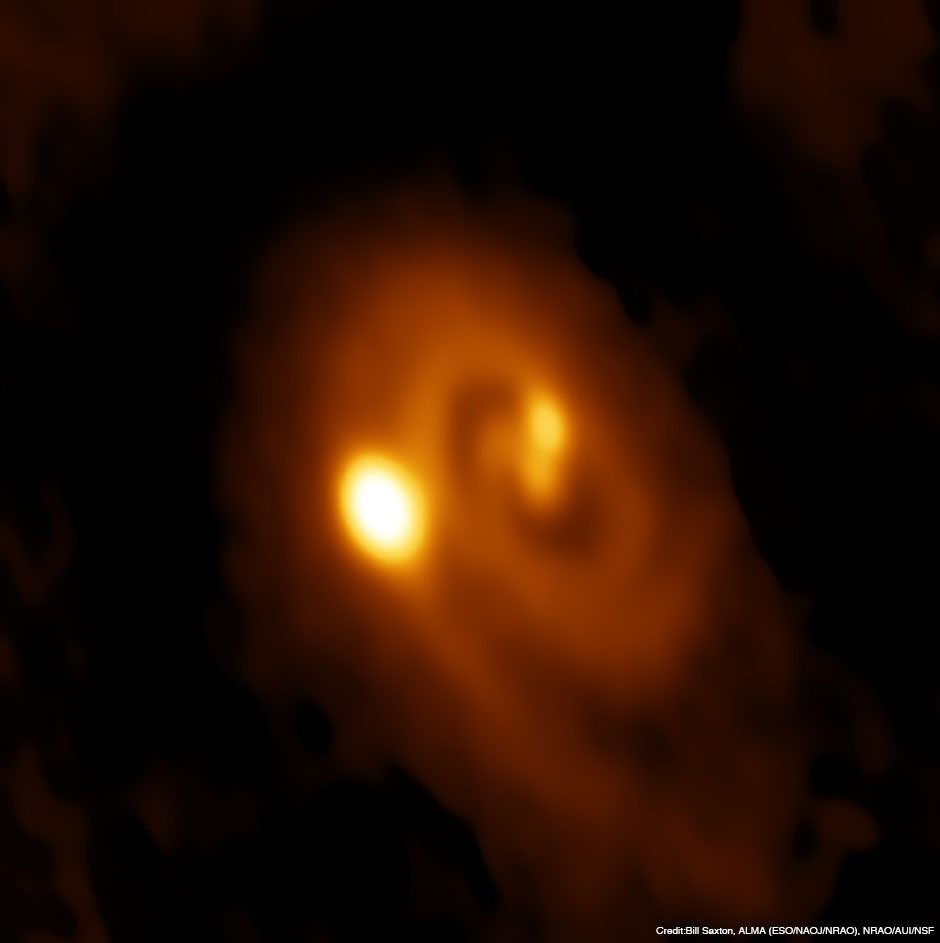Triplet baby stars born in a spiral
Astrophotography・

ALMA captured this detailed image of newborn triplet baby stars in a star forming region in the constellation Perseus. In the center of this celestial body (named L1448 IRS3B), there are two baby stars which are about 150,000 years old, and a third star is about to be born in the surrounding spiral gas. The distance between the two stars in the center is about the same as the diameter of Neptune’s orbit in the Solar System. The distance to the third star is about three times longer than that. This image supports the theory that some binary star systems are born when a gas disk becomes gravitationally instable and forms spiral structures which divide the gas.
Text by: Masaaki Hiramatsu (NAOJ Chile Observatory)
A multiple star formation scenario discovered from observations
It is known that in the Galaxy more than half of the stars are formed as multiple-star systems called binary stars or trinary stars. However, the formation scenario has not been established yet. This observation gives significant support to the theory that multiple-stars are formed when the gas disk surrounding a baby star breaks up due to gravitational instabilities. The outermost baby star is estimated to be about 10,000 years old. This is about the time required for the spiral to rotate a few times. It is an exceptionally young baby star whose birth environment still remains. It is an important celestial body to research about newborn stars. We have no idea whether these triplet stars will peacefully absorb the surrounding gas and grow together, or if just one of the stars will grow quickly, or if one of the stars will be ejected. These stars stir my imagination.
Text by: Kazuya Saigo (NAOJ Chile Observatory)
Translations by: Hiroko Tsuzuki and Ramsey Lundock (Public Relations Center, NAOJ)
Image Data
| Object | L1448 IRS3B |
|---|---|
| Telescope | ALMA |
| Credit | Bill Saxton, ALMA (ESO/NAOJ/NRAO), NRAO/AUI/NSF |